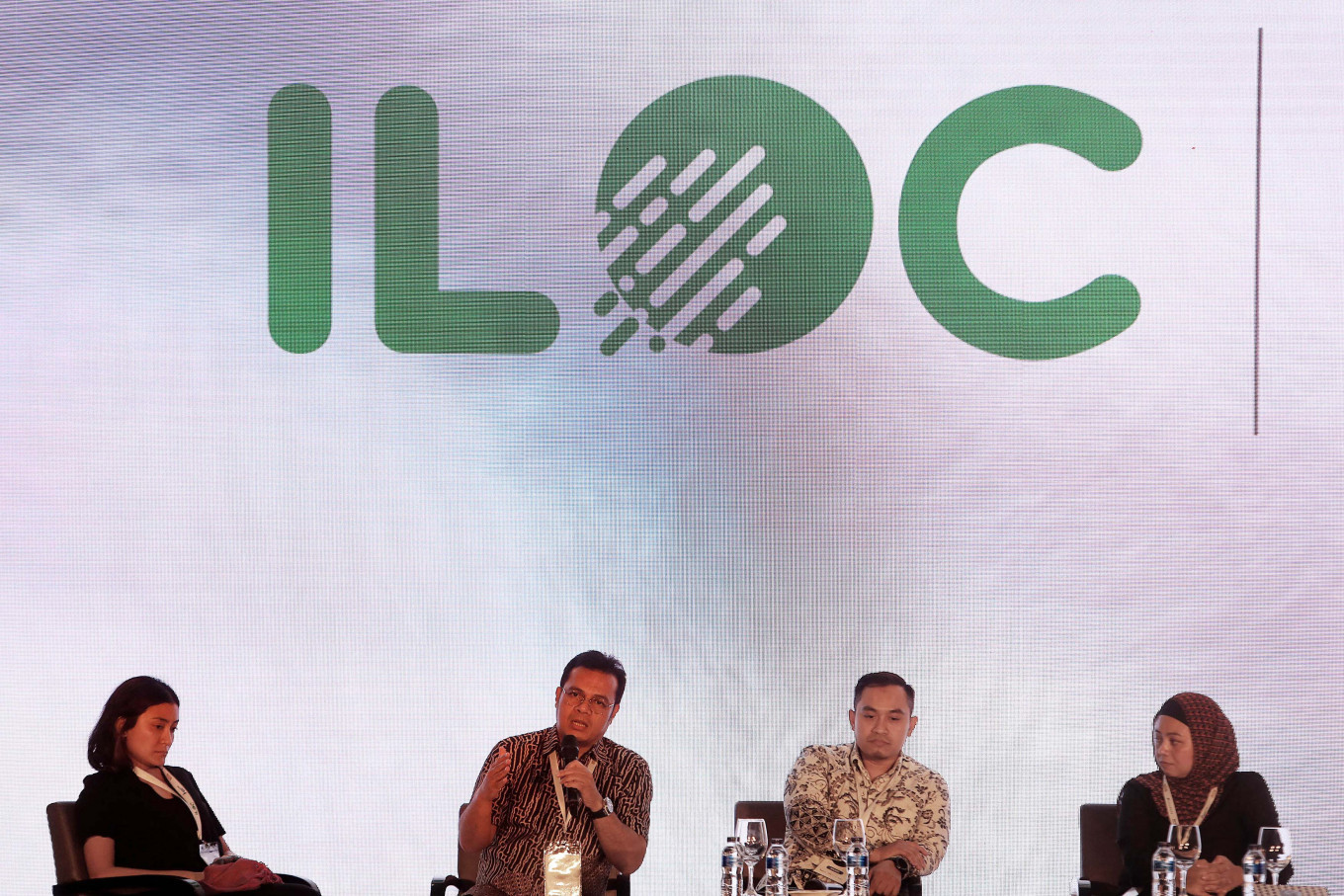Popular Reads
Top Results
Can't find what you're looking for?
View all search resultsPopular Reads
Top Results
Can't find what you're looking for?
View all search resultsAI-powered Hoax Intel enters the fray against online hoaxes
Homegrown digital developer Prosa.ai has channeled artificial intelligence (AI) to come up with a platform that picks out pearls of information from the bloated, hoax-riddled internet.
Change text size
Gift Premium Articles
to Anyone
 Crunching data: Panelists at the 2019 Indonesia Lokadata Conference (ILOC) – (from left) University of Indonesia social and political sciences lecturer Inaya Rakhmani, 'The Jakarta Post' chief editor Nezar Patria, Prosa Solusi Cerdas CEO Teguh Eko Budiarto and International Center for Journalists TruthBuzz fellow Astudestra Ajengrastri – discuss the role of data journalism in combating fake news on Wednesday, Aug. 28, 2019, in Jakarta. (JP/Seto Wardhana)
Crunching data: Panelists at the 2019 Indonesia Lokadata Conference (ILOC) – (from left) University of Indonesia social and political sciences lecturer Inaya Rakhmani, 'The Jakarta Post' chief editor Nezar Patria, Prosa Solusi Cerdas CEO Teguh Eko Budiarto and International Center for Journalists TruthBuzz fellow Astudestra Ajengrastri – discuss the role of data journalism in combating fake news on Wednesday, Aug. 28, 2019, in Jakarta. (JP/Seto Wardhana)
D
igital developments can be both a blessing and a curse for users. Hoaxes and other deliberately fabricated content often spread faster on social media and messaging platforms like WhatsApp than news from trusted sources.
Verification is key to separating the chaff, and data can be used as a weapon against hoaxes in the digital realm.
The recently launched Hoax Intel is one such tool that aims to tackle fake news online. Created by Bandung-based company PT Prosa Solusi Cerdas (Prosa.ai), Hoax Intel is described as an "AI-powered hoax detection engine and ecosystem”.
The Hoax Intel tool basically enables users to verify the articles they come across online through the use of artificial intelligence (AI). Developed in collaboration with the Communications and Information Ministry, the platform's chatbot lets you know via the LINE and Telegram messaging apps if an article is a hoax – or not.
Prosa.ai CEO Teguh Eko Budiarto told The Jakarta Post on Thursday by phone that the platform collated its database from trusted online media and fact-checking organizations like the Indonesian Anti-Slander Society (Mafindo).
“Our sources also [utilize] the ministry’s database,” said Teguh.
Users can activate the Hoax Intel chatbot by adding the ministry’s LINE account (@kemkominfo) and then posting the title, content or URL of the article in question, being sure to add "@kemkominfo" at the beginning of the post.
At the "Data Journalism against Fake News" discussion during the 2019 Indonesia Lokadata Conference (ILOC) on Wednesday in Central Jakarta, Teguh said the company was currently in the process of implementing the WhatsApp version of the platform.
Read also: The 2019 Indonesia Lokadata Conference: A data conference for all
“Hopefully, the public will learn to filter [news] before sharing it,” he added.
Verifying news, data and journalism are all cogs of the digital wheel. According to the Post's chief editor, Nezar Patria, it was vital for journalism to determine how to respond to and manage data in producing news.
“Journalism nowadays faces one challenge that I think is very tough, and we’ll probably witness the death of journalism because so much information is being produced by individuals using social media, not by media companies,” Nezar said in his capacity as a panelist at Wednesday's ILOC discussion.
However, he added, social media also allowed the public to communicate their views to media companies. Nezar suggested that journalists should return to their role as gatekeepers of accurate and factual information.
“We [should] filter the influx of data and give it meaning before presenting it to readers as what is important, what is relevant. That’s what data journalism is about,” he said.
Data journalism was more than just about numbers and statistics, and also involved uncovering the story that the data was telling. This approach was also relevant in reporting on breaking news.
Additionally, journalists should be able to process the data they receive through press releases, fact sheets, media kits and other media relations tools, as well as social media. They must also independently verify the information they receive and supplement it through direct observation, interviews and other journalistic methods to obtain clear and in-depth understanding of the information. (kes)










